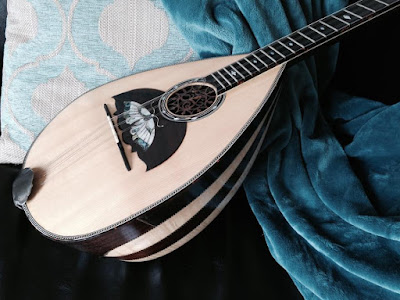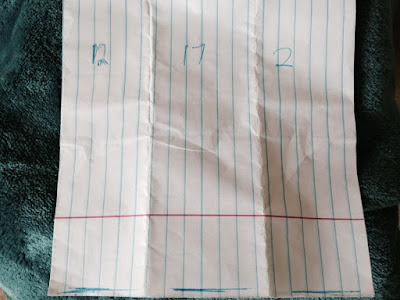Storage and maintenance of your musical string instrument
Five (5) quick advises !
-You may dreamed all your life to posses a beautiful musical string instrument!
-You may saved money for months, or years, until you were able to purchase the custom musical instrument of your dreams!
-And now that you are holding it in your hands, you are feeling as the most lucky person on earth!
The above hypothesis is not usually an uncommon story which, someone will hear from traditional lutherie enthusiasts, when they recount memories of their first musical instrument purchase.
And since this string instrument meant to be the holy grail for most of us (including myself), I though to write five (5) quick, personal tips regarding the maintenance and storage of my bouzouki.
1. Mark the action (height between the strings and the neck).
When you will receive your string instrument spend 5 minutes of your time, to mark the action. These 5 minutes may be proven to be salvation in the long term.
Mark in a piece of paper the initial action of your strings at the 2nd, 12th and 17th-18th ( the fret close to the point where the neck meets the bowl) fret.
Be sure to check any divergence of the initial action periodically. If you notice variation of the action, inform your luthier immediately
Place small cotton pouches full of rice or silicon small bags (silica gel) close to the neck inside the case to eliminate the moisture.
-You may dreamed all your life to posses a beautiful musical string instrument!
-You may saved money for months, or years, until you were able to purchase the custom musical instrument of your dreams!
-And now that you are holding it in your hands, you are feeling as the most lucky person on earth!
The above hypothesis is not usually an uncommon story which, someone will hear from traditional lutherie enthusiasts, when they recount memories of their first musical instrument purchase.
And since this string instrument meant to be the holy grail for most of us (including myself), I though to write five (5) quick, personal tips regarding the maintenance and storage of my bouzouki.
1. Mark the action (height between the strings and the neck).
When you will receive your string instrument spend 5 minutes of your time, to mark the action. These 5 minutes may be proven to be salvation in the long term.
Mark in a piece of paper the initial action of your strings at the 2nd, 12th and 17th-18th ( the fret close to the point where the neck meets the bowl) fret.
Be sure to check any divergence of the initial action periodically. If you notice variation of the action, inform your luthier immediately
2. Have your instrument tuned.
Don't storage and leave your instrument de-tuned or higher than the normal frequency, tuned. The difference from the forces applied by the strings on the neck can cause unwanted results on the action and pliability of your musical instrument.
Use always a tuner before storing your musical instrument and be sure that the strings are tuned at the right frequency.
Use always strings with the gauge recommended by the luthier. Don't experiment with different thickness of strings on your musical instrument before informing and asking your luthier.
If you will store your instrument for long period of times be sure to de-tune the strings one or two tones lower than normal.
3.Give life to your strings
Before storing your instrument (every time after you play) swipe the strings with a soft cotton cloth and pass a thin layer of string cleaner and conditioner.
The conditioner with prevent the strings from getting traces of rust, and loose quickly their sharp and vibrant sound.
4. The digital hygrometer (humidity/temperature reader) is a must.
Perhaps one of the most important accessories when you posses a custom string instruments.
It is very useful to control the relative humidity in the room where your instrument is being kept. Expensive classic instruments are kept in airtight cases with fully integrated hygrometer.
The most suitable relative humidity for a bouzouki instrument accordingly to an article by the famous luthier Xristo Spourdalaki in klika (http://www.klika.gr) is from 47% to 57%.
5.Rise pouches, and closet. Old fashion techniques
Storage your musical string instrument inside its case, and position it horizontally flat with its back lying on the floor.If the area where you live has high levels of humidity, its been recommended to storage your musical string instrument with its case inside a walking closetPlace small cotton pouches full of rice or silicon small bags (silica gel) close to the neck inside the case to eliminate the moisture.








Hello Spiros,
ReplyDeleteFirstly, I would like to congratulate you for the blog you have created. I hope that you will always have the time, the motivation and the strength to keep it alive.
I have never realized that we could actually measure our instrument action. I know how important the action is etc etc. But I have never realized that I could keep the initial/original distance!Thanks for that.
I may have one or two objections on the storage advices (4 & 5):
4. Humidity, is (as you say) one of the most important parameter for the life of the instrument. But, temperature as well. The instrument absorbs and discards moisture (maniko changes position and extra forces apply to the instrument), from and to the environment, depending not only on the relative humidity, but on the combination of relative humidity and temperature. The amount of humidity that will be absorbed or discharged, depends also on the % of moisture the luthier kept to the wood during the construction of the instrument. Usually, this is up to 12%, for Greece. So, the range 45-55 % is fully adequate.
If, for any reason, you order an instrument with high initial moisture (for example 12 or 14 % if you live in a place with high relative humidity and high temperature), you may find out that your instrument will probably suffer at 45 % humidity, combined with 15-20 C temperature! Ok, the example is a bit extreme. For the 99% of situations, the 45-55 range is ok!I just wanted to point out the relationship between relative humidity and temperature.
5. I am wondering, whether the rice pounces will reduce relative humidity, below the desirable point. For example, you may have 80% relative humidity. After a few days/moths of using the pounce how much will the rel/ve humidity be? It is ok if it is 60, 50, 40. But if it goes below that? Combined with low temperature?This would be a massive problem (for example 20% rel humidity with 15-20 C temp). As you probably know, low humidity is much worse than hight humidity for the instrument. (see also how temp and rel. humidity combine above).
check http://www.rembetiko.gr/forums/showthread.php?t=27717 if you have a few spare minutes. It explains the relationship between humidity and temperature. Any comments are welcomed!
Regards from Greece,
Christos (we have had a chat at rembetiko forum about a luthier)
Dear Christos,
ReplyDeleteThank you very much for such a constructive and informative answer regarding the relative humidity and temperatures!
I will agree to both of your remarks , no doubt about that your brought some very valid points.
It is really a great pleasure that followers of the blog with such an extended knowledge on different topics as you can contribute in informing further and more accurately the readers
Warm regards
SDimis
Can you tell me how to lower string height on a bouzouki? The luthier who made my instrument has not been returning my calls or answering my e-mails and over the summer, the action got a little higher.
ReplyDeleteDear Anonymous thank you for reaching out
ReplyDeleteI am not a luthier, so i will not want to give any tech advises especially without examine the instrument
The luthier MUST stand behind his creations, and fix any small offsets on the neck!
How many years is your instrument ?
How higher the action became?
And if you wish send me through email the name of the luthier.
We may together forward your issue more fast so you can have a solution quickly